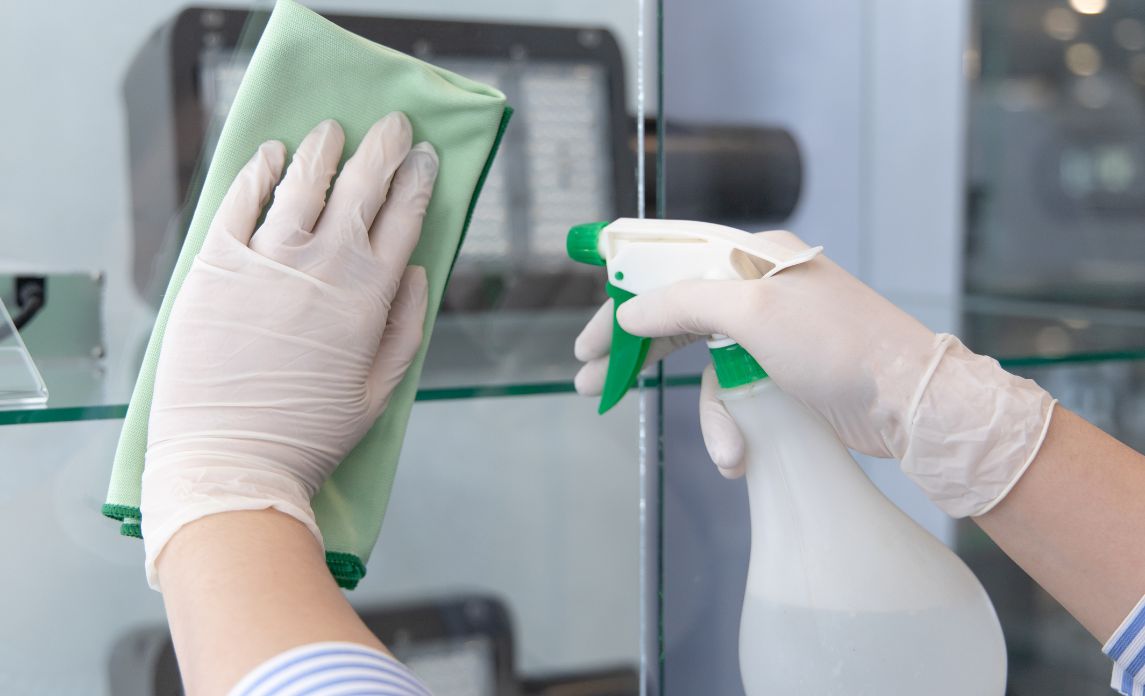When you or any of the people you live and/or work with have allergies, you need to be extra careful with cleaning. Depending on a person’s sensitivity, even the tiniest speck of dust can trigger a reaction.
To minimise allergy attacks both at home and at work, here are some cleaning tips to keep in mind. These include the individual types of cleaning that you should try, as well as products you may want to use:
Vacuum With a HEPA Filter Vacuum
Your trusty broom can help you get rid of a lot of dust. However, if you want to do a more thorough job, you should invest in a vacuum cleaner with a HEPA filter.
HEPA stands for high efficiency particulate air; this means that a HEPA filter can remove almost any airborne particle with a size of 0.3 microns (µm)—including pollen, dander, mould, and many other allergens.
For the best results, look for a bagless vacuum to minimise cleanup. There are also robotic vacuums that can clean for you at regular intervals, so there’s no chance for dust and other particles to build up.
If you have heavy drapes and/or fabric-covered walls, it’s also a good idea to get a multipurpose vacuum that you can use to remove allergens from these soft surfaces.
Try Steam Cleaning
Depending on the type of cleaning job, sometimes a bit of mild detergent and water are enough to get the job done. However, for stubborn dirt and stains, you may need stronger, more concentrated products. The downside is that these may contain chemicals that can trigger allergy attacks.
If this is the case, you may want to consider steam cleaning. This process relies on heat and moisture instead of chemicals to sanitise and deodorise, so you can be confident that the allergens are at a minimum. As a bonus, the steam’s extremely high temperature can kill a variety of viruses and bacteria so you also don’t have to worry about diseases.
For the best results, it’s best to hire professional cleaners to do your steam cleaning for you. There are smaller steam cleaning machines that you can buy to use for DIY-ing and minor tasks, but working with the commercial cleaners will ensure that the job gets done right the first time.
Use Microfibre Cloths
For daily dusting, microfiber cloths will do a better job than old rags or paper towels. It’s best to purchase several pieces, and designate one cloth per room or area to prevent contamination. Fortunately, microfiber cloths are relatively affordable; they also come in different designs and colours so it’s easy to identify which cloth is used where.
You should also eventually replace a few of your cleaning tools, such as mops and long-handled dusters, with microfiber ones. Not only are the microfiber counterparts more effective, they’re also more long-lasting with proper care.
Wash Beddings With Hot Water
The bedroom is home to one of the most notorious allergens: the dust mite. In particular, your pillowcases, bed sheets, and blankets are some of the favourite lodgings of these microscopic pests. This is because they thrive in warm and humid environments, which your pillows and bed become after just a few days of use.
The good news is that dust mites are easy to fight. Simply wash all your beddings every week (or at least once every two weeks) using water that’s at least 54 degrees Celsius. It’s also better to choose synthetic materials over wool or feather, because the former are less prone to dust mite infestations.
Additional Tips
Get Unscented Cleaners
Many cleaning products, from dishwashing soap to laundry detergent, are formulated with scents like lemon, lavender, and the like. These fragrances are usually harmless if you don’t have allergies. Otherwise, you may experience attacks that vary in severity depending on how sensitive you are or how much of an allergen is present in the scent.
To avoid triggering any allergies, opt for unscented and hypoallergenic products. Anyway, if a place is truly clean, you won’t need artificial scents to mask any foul odours. For areas that need regular deodorising like the bathroom, try using baking soda to absorb smells.
Avoid Certain Cleaning Products
There are some cleaning products that contain allergens or cause irritation, such as the following:
- Ammonia
- Formaldehyde
- D-limonene
- Sodium lauryl sulphate
- Sodium hypochlorite
D-limonene is commonly used for citrus-scented products, while sodium lauryl sulphate is a surfactant or foaming agent that’s found in most soaps. Meanwhile, sodium hypochlorite or bleach is a good disinfectant.
The two former ingredients are much easier to avoid, compared to the latter. This is especially true because bleach is an accessible cleaning agent that’s widely used in both domestic and commercial settings.
If you can’t find alternatives to bleach, wear PPE when using it for cleaning. You don’t have to be in full gear, but the most important ones are the mask, gloves, and goggles.
With the proper techniques and products, you’ll be able to get any space clean and free from allergens in no time.


